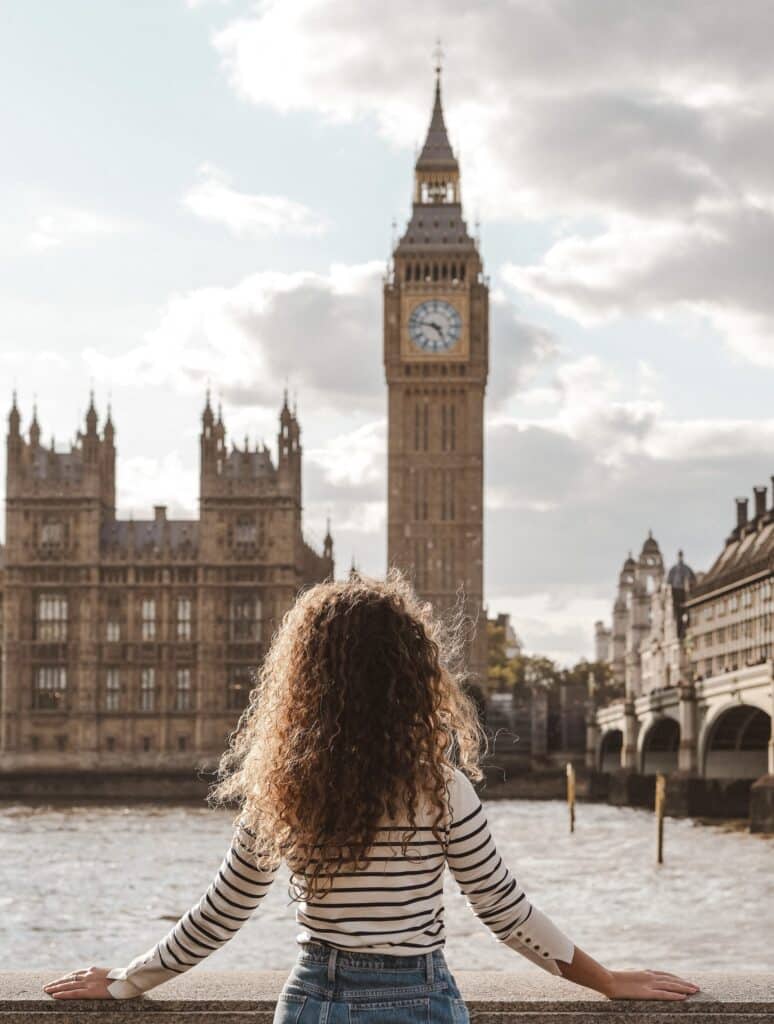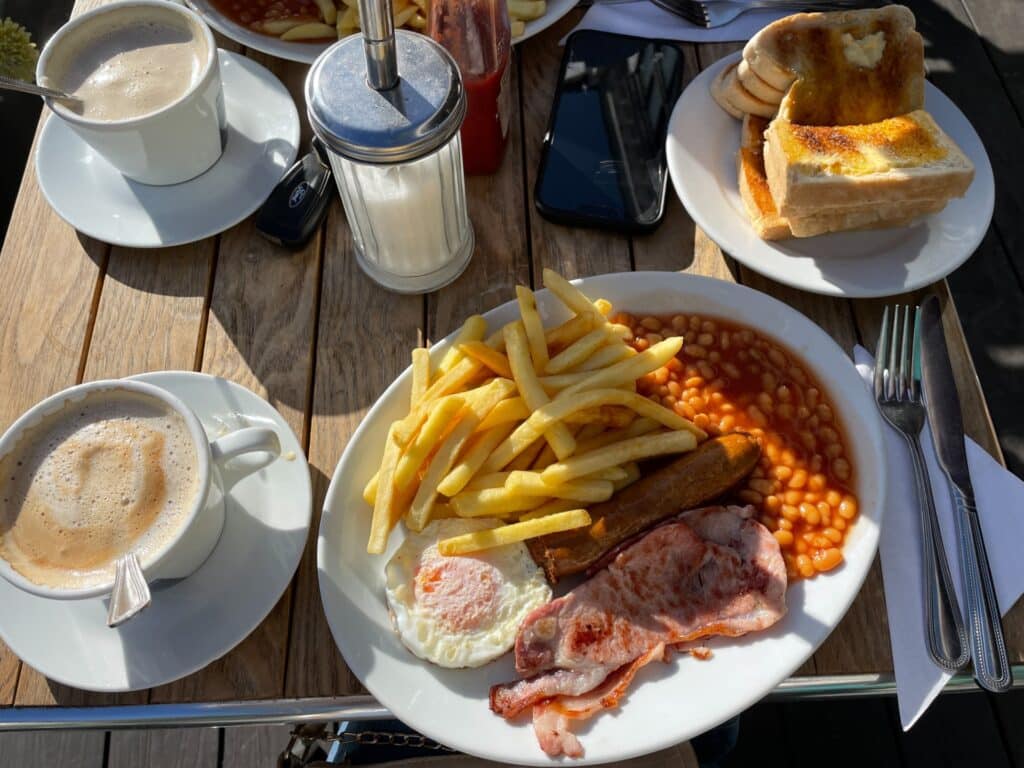All you need to know before visiting London
London is the majestic metropolis that stands as both a guardian of history and a beacon of contemporary culture. It beckons travelers with its irresistible blend of old-world charm and modern vitality. A city where cobblestone streets wind their way past centuries-old cathedrals and cutting-edge architectural marvels, London is a mesmerizing tapestry of tradition and innovation. From the resplendent grandeur of Buckingham Palace to the bustling creativity of Shoreditch’s street art, London invites exploration at every corner. I was in London for four days and assure you that it’s a destination where every step unravels a new story. Visiting London will make you fall in love with the city’s captivating tapestry of life. Here is all you need to know if you are visiting London for the first time:
Best time to visit London?
The best time to visit London is during the months of late spring and early summer. In May and June, the city awakens with a burst of color and energy as parks and gardens burst into bloom, and outdoor events come to life. The pleasant temperatures, ranging from 15°C to 20°C, provide ideal conditions for exploring London’s iconic landmarks. Moreover, this period offers longer daylight hours, allowing you to maximize your time exploring the city’s diverse neighborhoods and cultural attractions. Additionally, hotel rates are generally more favorable compared to the peak summer months. It makes this an excellent time for budget-conscious travelers to experience the best of London.
Another magical period is during Christmas. London during Christmas time transforms into a magical winter wonderland. The city comes alive with festive lights, enchanting decorations, and a joyful atmosphere. I visited London both during spring and Christmas time and enjoyed it so much.

How many days do you need in London?
The ideal duration for visiting London largely depends on your interests and the depth of exploration you desire. However, a well-planned trip of at least four to five days is often recommended to fully appreciate the city’s diverse offerings. In this timeframe, you can cover the must-see attractions and also have time to explore neighborhoods like Soho, Covent Garden, and Shoreditch. If you wish to delve deeper into London’s cultural treasures, consider extending your stay to two weeks or more. Thus allowing you leisurely visits to world-class galleries, theaters, and a day trip to nearby destinations like Oxford or Windsor. I stayed 4 full days for the first time in London, and I can fully assure you that it is enough to see all the main attractions in peace.
How to get around in London?
Navigating London is a breeze, thanks to its efficient and well-connected transportation system. The city offers a variety of options for getting around, allowing you to explore its diverse neighborhoods and iconic landmarks with ease. The London Underground, known as the Tube, serves as the backbone of the city’s transit network. It provides fast and reliable connections to nearly every corner of London. Buses, trams, and the Overground complement the Tube, offering convenient routes to destinations not directly accessible by subway. Additionally, cycling enthusiasts can take advantage of dedicated bike lanes and bike-sharing programs. London’s iconic black cabs are readily available for a classic, albeit slightly pricier, mode of transportation. Furthermore, river buses ply the River Thames, providing scenic routes to key attractions. With London’s comprehensive transportation options, you’ll have the freedom to explore the city at your own pace, making the most of your visit to this dynamic metropolis.

Tip: For seamless travel, consider using an Oyster card or a contactless payment method, which allows you to effortlessly tap in and out of public transportation. In the underground don’t forget to check in and out, instead In the buses, you have to check in once you are on the bus.
Best area to stay while visiting London:
The best area to stay in London largely depends on your preferences and interests, but one of the most popular and convenient choices is the Westminster area. Situated in the heart of the city, Westminster offers easy access to some of London’s most iconic landmarks, including Big Ben, the Houses of Parliament, and Buckingham Palace. Staying here means you’ll be within walking distance of many attractions. It has also excellent transport links via the Westminster and St. James’s Park Underground stations making it simple to explore the city further. Anyhow, the very well public transportation, makes every neighborhood comfortable to base yourself on when in London.
Visiting London in a budget destination?
London may not always be synonymous with budget travel. However, with careful planning and savvy choices, exploring the city need not be excessively costly. Transitioning from the notion of London as an expensive destination, travelers can discover a range of affordable accommodations, from hostels to budget-friendly hotels. Public transportation, like the iconic red buses and the Underground, offers efficient and cost-effective ways to traverse the city. Additionally, many of London’s world-class museums and galleries offer free admission, providing cultural enrichment without the price tag. Dining can be budget-conscious too, with a wealth of street food vendors, local markets, and casual eateries serving diverse and affordable fare. While London can cater to luxury tastes, it also opens its doors to travelers seeking an economical yet enriching experience, proving that with a bit of strategy, this remarkable city can indeed be enjoyed on a budget.

Where to eat in London:
Exploring London’s culinary scene is a delightful adventure, with a plethora of dining options to choose from. Although it is very difficult to choose between thousands of restaurants, here are my suggestions:
For a taste of diverse flavors and international cuisine, head to Borough Market, where you can savor gourmet delights from around the world.
If you’re in the mood for quintessential British fare, don’t miss the opportunity to dine at a traditional pub, such as The Churchill Arms, serving classic dishes like fish and chips.
For a Michelin-starred experience, restaurants like The Ledbury and Alain Ducasse at The Dorchester offer exquisite fine dining.
To immerse yourself in London’s dynamic street food culture, visit Camden Market or Brick Lane, where you can sample dishes from all corners of the globe.
And for a touch of elegance, indulge in afternoon tea at iconic venues like The Ritz or Claridge’s.

Extra things to keep in mind when in London:
Visa Requirements:
The visa requirements for visiting London depend on your nationality and the purpose and duration of your visit. Please note that immigration and visa requirements can change over time. I recommend checking with the official website of the UK government or the nearest UK embassy or consulate in your country for the most up-to-date visa information and application procedures based on your specific circumstances and nationality.
Weather Variability:
London weather can be unpredictable, so it’s a good idea to dress in layers and carry an umbrella or raincoat, even during the summer months.
Traffic:
London’s streets can be congested, so walking or using public transport is often quicker than taking a taxi.
Voltage:
The UK uses a different voltage (230V) and plug type (Type G) from many other countries, so you may need an adapter and possibly a voltage converter for your electronics.
Emergency Services:
The emergency phone number in the UK is 999 for police, fire, and medical emergencies.
Cultural Sensitivity:
London is a diverse city, so be respectful of different cultures and customs.
Emergency Numbers:
Familiarize yourself with the emergency numbers in the UK, which is 999 for police, fire, and medical emergencies.
Travel Insurance:
Consider purchasing travel insurance that covers medical emergencies, trip cancellations, and lost or stolen belongings.
Safety:
London is generally safe, but like any major city, it’s essential to be cautious of pickpockets, especially in crowded areas and on public transportation. Sit near the driver or conductor on buses if you’re traveling alone at night.
Secure Valuables:
Keep your passport, money, and important documents in a hotel safe or a secure money belt when you’re out and about.
Nightlife Safety:
When enjoying London’s nightlife, such as pubs and clubs, stay with a group of friends, and never leave your drink unattended. When walking at night, stick to well-lit streets and avoid poorly lit or deserted areas.
ATM Safety:
Use ATMs located inside banks or well-lit, busy areas, and be discreet when withdrawing cash. Shield your PIN while entering it.
Scams:
Be cautious of street scams, such as people offering “free” services or unsolicited assistance. Avoid engaging with individuals who seem overly persistent.
Travel Alerts:
Stay informed about any travel advisories or security alerts issued for London or the UK by your country’s government.